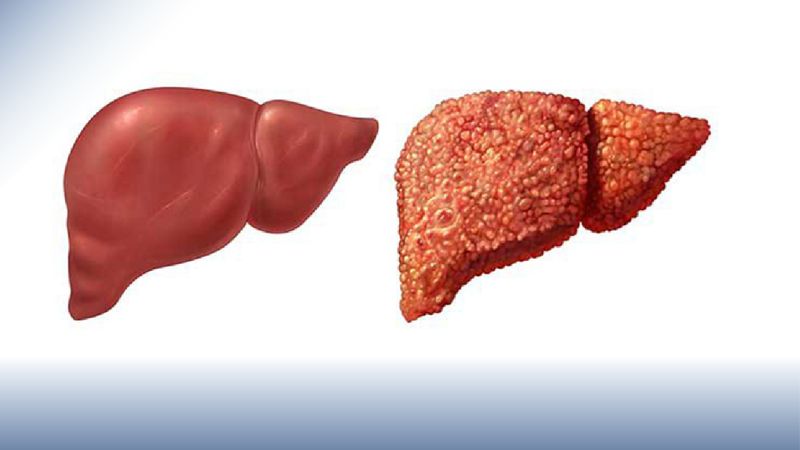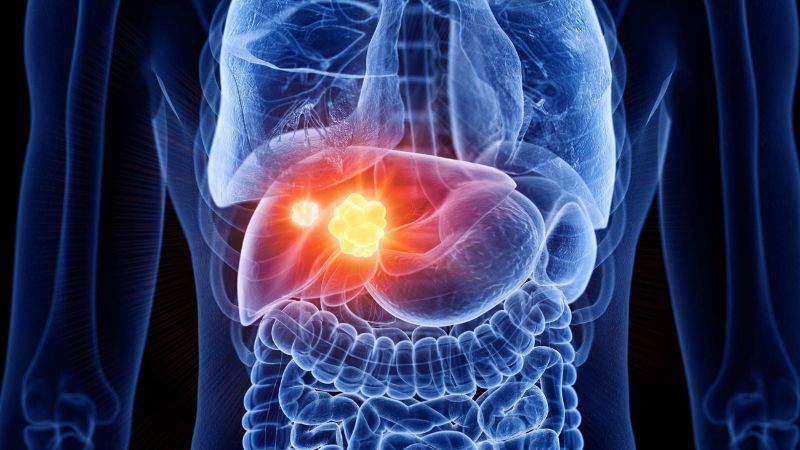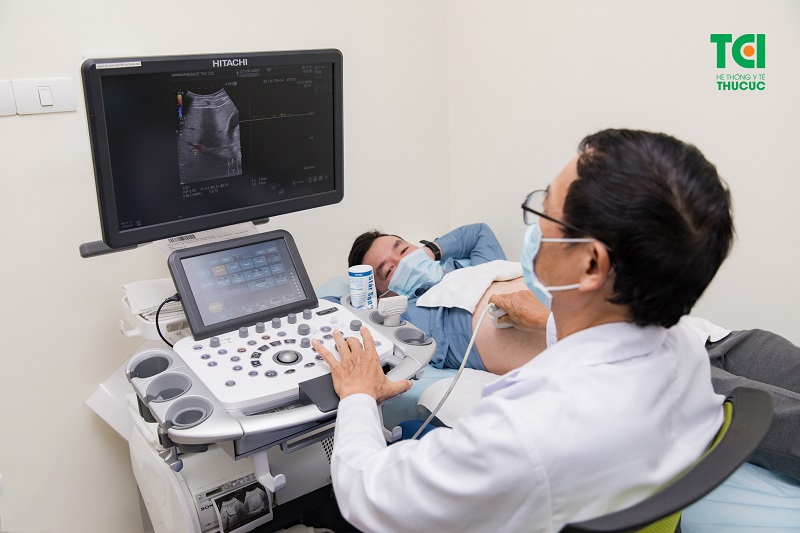Liver cirrhosis is one of the most severe chronic liver diseases and is becoming increasingly prevalent in Vietnam due to various causes, most notably excessive alcohol consumption, viral hepatitis, and metabolic disorders. This condition often progresses silently and leads to numerous serious complications that significantly affect patients’ quality of life and survival. Early detection of symptoms, understanding the causes and the consequences of liver cirrhosis, and applying appropriate treatment strategies are critical in controlling the disease and minimizing its long-term impact.
1. Understanding Liver Cirrhosis
1.1 What is liver cirrhosis?
Liver cirrhosis represents the final stage of chronic liver injury, in which healthy liver cells are gradually replaced by scar tissue (fibrosis), causing a decline in liver function. This damage results from prolonged exposure to harmful agents such as hepatitis viruses, alcohol abuse, non-alcoholic fatty liver disease (NAFLD), or liver toxins.
In its early stages, cirrhosis may not produce noticeable symptoms. Over time, however, the liver’s ability to detoxify the blood, synthesize proteins, metabolize nutrients, and filter waste deteriorates, leading to systemic effects and a range of troubling symptoms.
1.2 Common causes of liver cirrhosis
In Vietnam, the leading causes of cirrhosis are chronic infections with hepatitis B and C viruses. These viruses continuously damage the liver over many years, leading to fibrosis and eventually cirrhosis.
Chronic alcohol abuse is another major cause, as alcohol directly damages liver cells. Other causes include NAFLD, autoimmune liver diseases, inherited disorders such as Wilson’s disease, and long-term exposure to environmental or occupational toxins.

Repeated liver damage can lead to scar tissue formation and impaired liver function.
2. The Consequences of Liver Cirrhosis on Health
2.1 Severe liver function impairment
As scar tissue replaces functional liver cells, the organ loses its ability to perform vital functions. One key issue is the reduced production of albumin – a protein crucial for maintaining oncotic pressure and transporting hormones and vitamins. This deficiency leads to fluid retention, malnutrition, and persistent fatigue.
The liver’s diminished detoxification capacity results in toxin buildup in the bloodstream, potentially causing neurological symptoms and hepatic encephalopathy – a life-threatening condition if untreated.
2.2 Life-threatening complications
One of the consequences of liver cirrhosis is portal hypertension, a condition where increased pressure in the portal vein leads to complications such as esophageal varices. These dilated blood vessels can rupture and cause massive gastrointestinal bleeding – a leading cause of death in advanced cirrhosis.
Other serious complications include ascites (abdominal fluid accumulation), spontaneous bacterial peritonitis, coagulation disorders, and hepatocellular carcinoma (liver cancer), particularly in patients with chronic hepatitis B or C.
2.3 Psychological impact and reduced quality of life
In addition to physical deterioration, patients with cirrhosis often suffer from psychological distress, including anxiety and depression. Long-term treatment and medical expenses can become financially burdensome, especially for those who are primary earners in their households, thus significantly affecting their overall quality of life.

Liver cancer is the most serious complication of cirrhosis.
3. Recognizing Signs of Liver Cirrhosis
3.1 Subtle symptoms in early stages
In the early phase, liver cirrhosis symptoms are vague and non-specific – such as fatigue, appetite loss, minor weight loss, or dull pain in the liver area – making early diagnosis difficult.
3.2 Advanced symptoms in later stages
As the disease progresses, patients may present with jaundice, lower limb swelling, abdominal distension from ascites, easy bruising, spider angiomas on the skin, palmar erythema, and cognitive decline. In advanced stages, complications like hepatic coma, severe infections, or gastrointestinal bleeding can occur, posing immediate threats to life.
4. Effective Treatment Approaches
4.1 Treating the underlying cause
The primary goal in managing liver cirrhosis is to slow its progression, control symptoms, and prevent complications. Treatment plans vary based on the underlying cause.
For viral hepatitis-induced cirrhosis, antiviral medications are essential to suppress viral activity. In alcohol-related cases, complete abstinence from alcohol is critical. For autoimmune or metabolic causes, concurrent treatment of underlying conditions is required.
4.2 Managing complications and supporting liver function
Controlling complications is key. Diuretics can help manage ascites, beta-blockers reduce the risk of variceal bleeding, and antibiotics are used when infections are suspected. Nutritional support with adequate protein, vitamins, and minerals is important, though sodium intake should be limited to reduce fluid retention.

egular liver check-ups with a specialist help monitor fibrosis progression.
4.3 Liver transplantation – the last resort
For decompensated cirrhosis or liver cancer not responding to treatment, liver transplantation may be the only viable option. Though complex and costly, it can restore liver function and significantly extend survival. However, access to donor organs and treatment costs remain significant barriers in Vietnam.
5. Prevention and Community Awareness
5.1 The role of a healthy lifestyle
Preventing the consequences of liver cirrhosis starts with healthy habits – limiting alcohol intake, maintaining a healthy weight, exercising regularly, and managing chronic conditions such as diabetes and dyslipidemia.
5.2 Vaccination and regular health checks
Vaccinating against hepatitis B and undergoing regular check-ups to detect hepatitis C or other liver conditions early is essential in preventing cirrhosis. High-risk groups – including healthcare workers, those with a history of blood transfusion, or close contact with hepatitis patients – should be closely monitored.
In conclusion, liver cirrhosis is a serious disease with potentially devastating health consequences. By raising public awareness, promoting preventive measures, and ensuring early diagnosis and effective treatment, the burden of the consequences of liver cirrhosis can be significantly reduced. For those already diagnosed, adherence to treatment, regular monitoring, and psychological support are crucial in managing the disease and improving quality of life.








